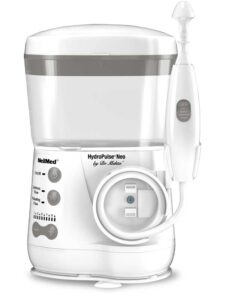Sinusitis and Allergy. From Free Yourself from Sinus and Allergy Book
Question: Should you use MRI imaging for diagnosing Sinusitis?
When people get Sinusitis and Allergy
Robert S., age thirty, grew up on an isolated farm and had home schooling. He was never sick. When he moved to Chicago, he was sick for one year and had to drop out of school. He volunteered to help in a preschool and got all the kids’ illnesses. But he got help from an immunologist, gave up smoking, avoided becoming chilled, and finally was able to return to college.
Allergy and Sinusitis: In one sense, allergy is a defense, but it can be too much of a good thing. Sneezing in the morning gets the dust out that accumulated last night. But when you sneeze non-stop over just a tiny bit of dust, that’s an allergy, and it’s not healthy. Nasal allergy doesn’t cause sinus disease. But when you have sneezed non-stop for weeks, your cilia become exhausted and can no longer function to remove the bacteria; therefore tbacteria remain in place, multiply and then you can get sinus disease.
Antibiotic abuse. Too many antibiotics given, especially if they are given haphazardly, effect the way your body reacts to a new infection. Today, many bugs have become resistant to ordinary antibiotics and have developed other defenses, like an umbrella to shield themselves from your defenses, called biofilm.
Chemicals and industrial products. Further on in this book you’ll find a list of products whose fumes or chemicals can slow your nasal cilia defense.
Other causes of rhinosinusitis: . There are certain medical conditions that can cause sinus sickness, too, such as cystic fibrosis and dryness due to medications.
I regularly see patients whose only sinus problem is that they are using a saline product that contains preservatives that impair their cilia function. This is why persons benefit when they make the saline without preservatives. For example Breathe Ease XL is without any benzalkonium. (www.hydromedonline.com)
A significant cause of chronic sinus problem is the use of nasal irrigation with a device that has flowback. Here the pus in the nose gets into the irrigation device and causes a contamination. Then every time the device is used, the nose is reinfected. Dr Nsouli has demonstrated the problem that daily irrigation with flowback can be a cause of chronic sinus disease. He concluded that such daily irrigation over a period of time removed too much of the natural defense mucus products. This is why using pulse wave irrigation without flowback is an advantage. Once nasal cilia are restored, there is no further need to continue irrigation that might remove the good defense products.
So you see, thirty-seven million people have sinus sickness for many reasons.
Answer to Question: Should you use MRI imaging for diagnosing Sinusitis?
Answer. You don’t usually use MRI for sinus disease diagnosis. MRI stands for Magnetic Resonance Imaging and is especially useful for imaging nerves. But it particularly shows fluid products. It is simply too sensitive for sinus disease and may show simple fluid, normal mucus as a disease. When MRI is done for other reasons, the radiologist reports the sinuses as showing changes, and there is un unnecessary referral to an ENT specialist. Besides, MRI is much more expensive than a simple X ray and usually not comfortable compared to a CAT scan.
CAT stands for computer assisted tomography. This is an ideal method for sinusitis as it can be done in the office and does not require unpleasant noise or “being in a tunnel.” It is the preferred method for chronic sinusitis diagnosis.

